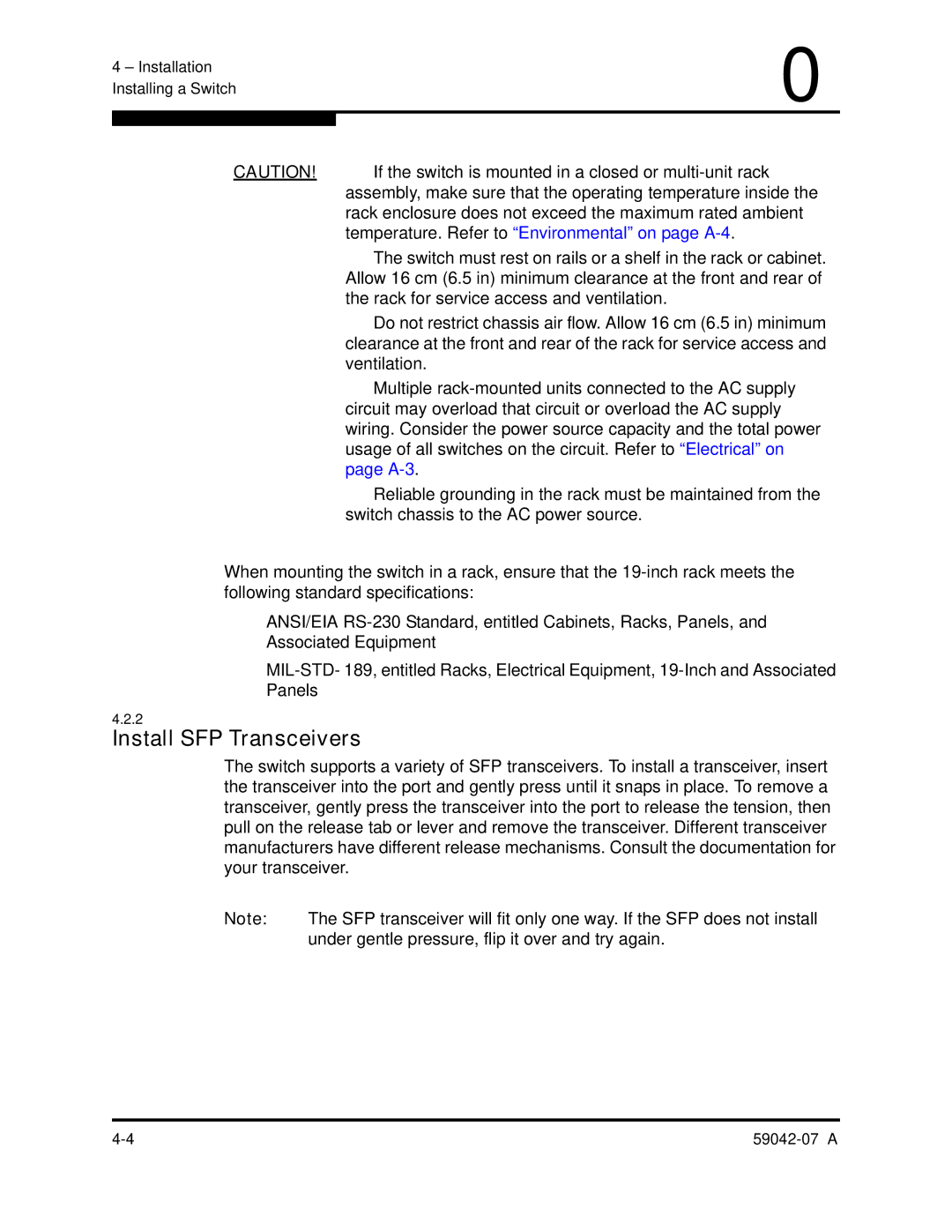4 – Installation |
| 0 | |
|
|
| |
Installing a Switch |
|
| |
|
|
| |
|
|
| |
| CAUTION! If the switch is mounted in a closed or | ||
|
| assembly, make sure that the operating temperature inside the | |
|
| rack enclosure does not exceed the maximum rated ambient | |
|
| temperature. Refer to “Environmental” on page | |
|
| The switch must rest on rails or a shelf in the rack or cabinet. | |
|
| Allow 16 cm (6.5 in) minimum clearance at the front and rear of | |
|
| the rack for service access and ventilation. | |
|
| Do not restrict chassis air flow. Allow 16 cm (6.5 in) minimum | |
|
| clearance at the front and rear of the rack for service access and | |
|
| ventilation. | |
|
| Multiple | |
|
| circuit may overload that circuit or overload the AC supply | |
|
| wiring. Consider the power source capacity and the total power | |
|
| usage of all switches on the circuit. Refer to “Electrical” on | |
|
| page | |
|
| Reliable grounding in the rack must be maintained from the | |
|
| switch chassis to the AC power source. | |
When mounting the switch in a rack, ensure that the
ANSI/EIA
4.2.2
Install SFP Transceivers
The switch supports a variety of SFP transceivers. To install a transceiver, insert the transceiver into the port and gently press until it snaps in place. To remove a transceiver, gently press the transceiver into the port to release the tension, then pull on the release tab or lever and remove the transceiver. Different transceiver manufacturers have different release mechanisms. Consult the documentation for your transceiver.
Note: The SFP transceiver will fit only one way. If the SFP does not install under gentle pressure, flip it over and try again.
